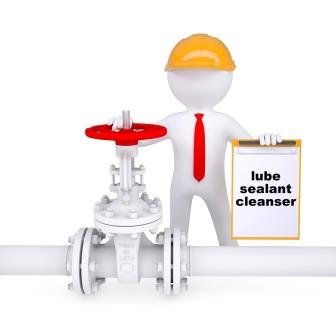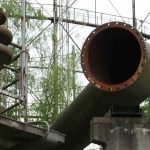8 Grease Gun Tips for Plug and Ball Valve Maintenance
Here are eight grease gun tips and maintenance guidelines involving the fittings, lube sealants, and equipment selection for ball valves and plug valves. Valve maintenance is critical to any damage prevention program as it ensures the proper functioning of a pipeline. After all, if your valves do not turn freely and seal properly, you have little or no control over your crude oil or natural gas pipeline.
Following these grease gun suggestions will ensure safety, and make the pipeline workers’ jobs easier and more efficient, therefore reducing pipeline operating expenses.
1 – Create a valve system map.
Create a system map showing the location of all your valves. Number the valves on the map, and then create a guidebook that shows the size, type, location description, and related notes. Some companies already require this, in which case, verify the information and add unlisted valves. In the event of an emergency, this system map may save lives.
2 – Stock the correct grease gun fittings.

Different valve styles often require distinct grease or lubrication fittings. For example, a plug valve may require a lube stick injection fitting or a “tall” giant button head fitting. These are sometimes called “lube screws” and have either an NPSM thread down or a coarse bolt thread down. They have either a single or double built-in internal check valve.
Most gate valves and ball valves usually use shorter, stubbier lubrication fittings with an NPT thread down. Giant button head fittings with either single or double-check valves are used. Vent cap fittings with or without giant button heads are also utilized.
A good maintenance practice is to have available spare fittings of each type in your toolbox.
3 – Lubricate the plug on older plug valves.
The primary seal in older lubricated plug valves is metal-to-metal between the plug and valve body. As pressure is applied to the valve through the lubrication fitting, it builds up in the lube sealant reservoir under the plug, eventually “lifting” the plug and forcing it away from the metal-to-metal seal. At this point, the lube sealant moves up and around the plug, lubricating it and forming an internal seal between the plug and the valve body.
4 – Have on hand vent cap lubrication fittings.
Vent cap-type lubrication fittings come in a variety of configurations and sizes. Cap sizes vary from ¾”–16 UNF and 7/8″–14 UNF to the more common 1″–14 UNS. These fittings have a pair of vent holes in the caps, which must be checked and cleared before removing them. The vent holes allow trapped pressure (if any) to vent before the cap is removed. For a short time, Grove Valves had a solid cap fitting with flats cut on the fitting threads, allowing pressure to escape. In all cases, the fitting is also known by the NPT male thread down. The most common are ¼”, 3/8″, ½,” and the occasional larger sizes.
5 – Check if your high-pressure grease gun is outfitted with a substandard hose.
The most common hand-operated valve grease gun is the 10,000 psi high-pressure hydraulic gun with a 15,000 psi cushioned gauge, 10,000 psi working pressure hose (12″ or 18″), and a 10,000 psi machined gauge tee, and a giant button head coupler.
Be aware of manufacturers or vendors outfitting grease guns with inferior hoses or cast tees with working pressures of 6500 PSI. While this may appear to be a great way to save money, it’s a safety breach and potentially dangerous. If you are shopping for a grease gun, ask the manufacturer about the pressure class of these components.
To help determine if your unit has the wrong pressure hose, the units in question may have a short (11 or 12-inch) solid black hose with little or no information on it, and the tee may have a casting outside the United States. If you’re unsure of the pressure rating on your hose, call the manufacturer or 877-5DUALCO, as substandard hose assemblies are dangerous though they can be easily corrected.
6 – Use appropriate valve cleaners.
Valve cleaners safely clean valves without damaging the valve or the seals. There are three basic types of valve cleaners:
Type 1 – Hydrating Agent
A standard valve cleaner is an amber-colored hydrating agent and often consists of vegetable oil, usually castor oil. It penetrates and softens materials such as old, hardened lubricants and sealants within the valve. The cleaner should be left in the valve for between four and twelve hours or more to work effectively. Alternatively, a channel can be forced in as little as 30 minutes, but this is a temporary fix. These softened materials, along with loose sand, rust, and other trash, can then be pushed from the valve by pumping in a good grade of fresh lube sealant.
Type 2 – Heavy-Duty Cleaner
Often a heavy-duty valve cleaner is needed. Operating companies often use this type of valve cleaner because it will clean rust deposits, cut old heavy waxes, remove varnish, sand, dust, rust, old hardened lubricants and sealants, and thoroughly clean valves. This cleanser should be used for at least four hours or more to do a thorough job. It must then be purged from the valve with a fresh lube sealant.
Type 3 – Dispersing Valve Cleaner
A dispersing valve cleaner is a new product that thoroughly cleans the valve’s interior. This cleaner type works in about the same amount of time as the others, is replaced by fresh lube sealant, and then disperses when it is pushed into the product stream. Dispersing the valve cleaner has the advantage of not fouling such items as meters, orifice plates, and other equipment. If any of this material does reach them, it can be cleaned with water instead of solvent.
7 – Use the best lube sealant for the application.
Valve lubricants must function as valve sealants, and sealants must also work as lubricants to do their job correctly. Because of their dual purposes, we commonly refer to them as lube sealants. To determine the best lube sealant for your application, you should consider the following:
- The temperature range the lube sealant will encounter
- The pressures the lube sealant will face
- Is there any CO2 or H2S present? If so, in what concentrations?
- Is there water present? If so, how much?
- Are there any other contaminants that cause concern?
- Are there injected chemicals that control paraffin or other unwanted materials present?
- Other anticipated problems
- Do you want a lube sealant with a vegetable or synthetic oil base?
Many castor oil-based products have the advantages of synthetic oils; however, they are less stable and subject to chemical reactions. Additionally, synthetic oil base has superior stability and longevity and is less expensive than vegetable oil-based sealants. For these reasons, we recommend using synthetic oil-based lubricants.
8 – Use appropriate lubrication equipment.
Selecting the correct lubrication equipment is critical to any maintenance program. DUALCO manufactures premium solutions for most systems. Call 303 697-6701 today to discuss the correct greasing equipment for your application.
Refer to SAE AMS-G-6032 “Grease, Plug Valve, Gasoline, and Oil Resistant,” which provides an excellent guide to valve lube sealant.
Grease Guns
- The DUALCO 11000 Series hydraulic grease gun models are for high-pressure lubricating applications, including pumps, ball, gate, and plug valves.
- The DUALCO 11725 is foot-operated hydraulic lubrication equipment for pumping flush, cleaners, and lube sealants into ball and plug valves.
- DUALCO 12000 Air/Hydraulic injection gun pumps valve flush, valve cleaners, and valve lube sealants into ball and plug valves.
- DUALCO Screw Prime Grease Guns lubricate various pumps, ball valves, gate valves, and plug valves at high and low pressure.
Automation
- The DUALCO Multi-Valve D.A.M. is an automated lubrication system that lubricates multiple valves with accurate lubricant levels.
- Dualco SCADA-Operated Lubrication Unit (S.O.L.U.) is a portable digital interface for remote operation to maintain proper valve lubrication levels.
Request a grease gun or grease quote.
These tips are courtesy of Dualco, the manufacturer of grease guns, valve lubricants, sealants, grease gun fittings, and valve maintenance training.

